遗传算法与深度学习实战——利用进化计算优化深度学习模型
遗传算法与深度学习实战——利用进化计算优化深度学习模型
- 0. 前言
- 1. 利用进化计算优化深度学习模型
- 2. 利用进化策略优化深度学习模型
- 3. 利用差分计算优化深度学习模型
- 相关链接
0. 前言
我们已经学习了使用进化策略 (Evolutionary Strategies, ES) 和差分进化 (Differential Evolution, DE) 调整超参数,并取得了不错的结果。在本节中,我们将应用 ES 和 DE 作为神经进化优化器,并且继续使用圆圈或月亮数据集。
1. 利用进化计算优化深度学习模型
我们已经通过遗传算法优化简单深度学习 ( Deep learning, DL) 网络的权重/参数,除了遗传算法之外,我们还有更强大的进化方法,比如进化策略 (Evolutionary Strategies, ES) 和差分进化 (Differential Evolution, DE),它们可能表现更好。接下来,我们将研究这两种更高级的进化方法。
下图显示了使用 ES 和 DE 算法的运行结果,并观察 DE 和 ES 如何演化在每个数据集的权重。可以看到,ES不仅在解决困难数据集方面表现出色,而且还有解决更复杂问题的潜力。
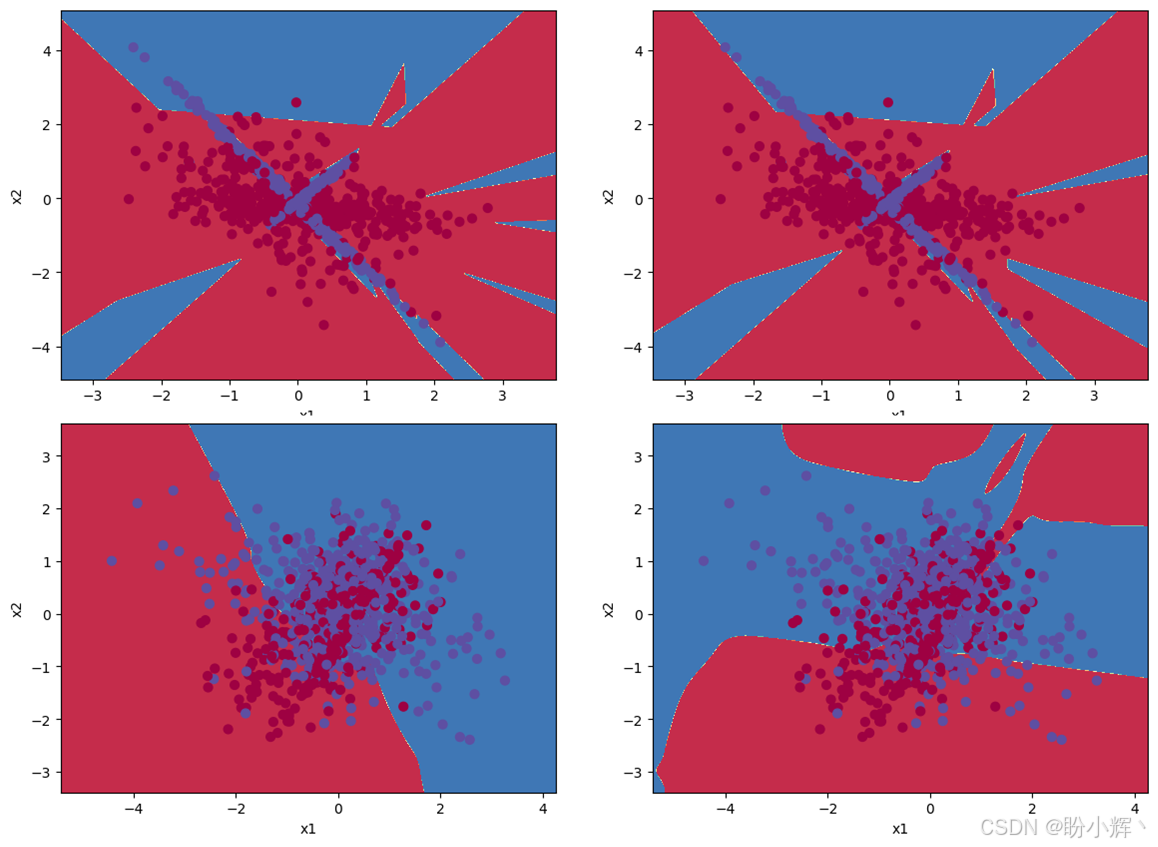
2. 利用进化策略优化深度学习模型
在代码中,将遗传算法转换为进化策略 (Evolutionary Strategies, ES) 和差分进化 (Differential Evolution, DE) 算法。首先使用 ES 算法:
import numpy as np
import sklearn
import sklearn.datasets
import sklearn.linear_model
import matplotlib.pyplot as plt
from IPython.display import clear_outputfrom deap import algorithms
from deap import base
from deap import benchmarks
from deap import creator
from deap import toolsimport randomnumber_samples = 1000 #@param {type:"slider", min:100, max:1000, step:25}
difficulty = 5 #@param {type:"slider", min:1, max:5, step:1}
problem = "classification" #@param ["classification", "blobs", "gaussian quantiles", "moons", "circles"]
number_features = 2
number_classes = 2
middle_layer = 25 #@param {type:"slider", min:5, max:25, step:1}def load_data(problem): if problem == "classification":clusters = 1 if difficulty < 3 else 2informs = 1 if difficulty < 4 else 2data = sklearn.datasets.make_classification(n_samples = number_samples,n_features=number_features, n_redundant=0, class_sep=1/difficulty,n_informative=informs, n_clusters_per_class=clusters)if problem == "blobs":data = sklearn.datasets.make_blobs(n_samples = number_samples,n_features=number_features, centers=number_classes,cluster_std = difficulty)if problem == "gaussian quantiles":data = sklearn.datasets.make_gaussian_quantiles(mean=None, cov=difficulty,n_samples=number_samples,n_features=number_features,n_classes=number_classes,shuffle=True,random_state=None)if problem == "moons":data = sklearn.datasets.make_moons(n_samples = number_samples)if problem == "circles":data = sklearn.datasets.make_circles(n_samples = number_samples)return datadata = load_data(problem)
X, Y = data# Input Data
plt.figure("Input Data")
plt.scatter(X[:, 0], X[:, 1], c=Y, s=40, cmap=plt.cm.Spectral)def show_predictions(model, X, Y, name=""):""" display the labeled data X and a surface of prediction of model """x_min, x_max = X[:, 0].min() - 1, X[:, 0].max() + 1y_min, y_max = X[:, 1].min() - 1, X[:, 1].max() + 1xx, yy = np.meshgrid(np.arange(x_min, x_max, 0.01), np.arange(y_min, y_max, 0.01))X_temp = np.c_[xx.flatten(), yy.flatten()]Z = model.predict(X_temp)plt.figure("Predictions " + name)plt.contourf(xx, yy, Z.reshape(xx.shape), cmap=plt.cm.Spectral)plt.ylabel('x2')plt.xlabel('x1')
plt.scatter(X[:, 0], X[:, 1],c=Y, s=40, cmap=plt.cm.Spectral)clf = sklearn.linear_model.LogisticRegressionCV()
clf.fit(X, Y)show_predictions(clf, X, Y, "Logistic regression")LR_predictions = clf.predict(X)
print("Logistic Regression accuracy : ", np.sum(LR_predictions == Y) / Y.shape[0])def sigmoid(x):return 1.0 / (1.0 + np.exp(-x)) ## Neural Network
class Neural_Network:def __init__(self, n_in, n_hidden, n_out):# Network dimensionsself.n_x = n_inself.n_h = n_hiddenself.n_y = n_out# Parameters initializationself.W1 = np.random.randn(self.n_h, self.n_x) * 0.01self.b1 = np.zeros((self.n_h, 1))self.W2 = np.random.randn(self.n_y, self.n_h) * 0.01self.b2 = np.zeros((self.n_y, 1))self.parameters = [self.W1, self.b1, self.W2, self.b2]def forward(self, X):""" Forward computation """self.Z1 = self.W1.dot(X.T) + self.b1self.A1 = np.tanh(self.Z1)self.Z2 = self.W2.dot(self.A1) + self.b2self.A2 = sigmoid(self.Z2)def set_parameters(self, individual):"""Sets model parameters """idx = 0for p in self.parameters: size = p.sizesh = p.shapet = individual[idx:idx+size]t = np.array(t)t = np.reshape(t, sh)p -= pp += tidx += sizedef predict(self, X):""" Compute predictions with just a forward pass """self.forward(X)return np.round(self.A2).astype(np.int)nn = Neural_Network(2, middle_layer, 1)
number_of_genes = sum([p.size for p in nn.parameters])
print(number_of_genes)individual = np.ones(number_of_genes)
nn.set_parameters(individual)
print(nn.parameters)IND_SIZE = number_of_genes
MIN_VALUE = -1000
MAX_VALUE = 1000
MIN_STRATEGY = 0.5
MAX_STRATEGY = 5CXPB = .6
MUTPB = .3creator.create("FitnessMin", base.Fitness, weights=(-1.0,))
creator.create("Individual", list, typecode="d", fitness=creator.FitnessMin, strategy=None)
creator.create("Strategy", list, typecode="d")def generateES(icls, scls, size, imin, imax, smin, smax): ind = icls(random.uniform(imin, imax) for _ in range(size)) ind.strategy = scls(random.uniform(smin, smax) for _ in range(size)) return inddef checkStrategy(minstrategy):def decorator(func):def wrappper(*args, **kargs):children = func(*args, **kargs)for child in children:for i, s in enumerate(child.strategy):if s < minstrategy:child.strategy[i] = minstrategyreturn childrenreturn wrappper
return decoratordef custom_blend(ind1, ind2, alpha): for i, (x1, s1, x2, s2) in enumerate(zip(ind1, ind1.strategy,ind2, ind2.strategy)):# Blend the valuesgamma = (1. + 2. * alpha) * random.random() - alphaind1[i] = (1. - gamma) * x1 + gamma * x2ind2[i] = gamma * x1 + (1. - gamma) * x2# Blend the strategiesgamma = (1. + 2. * alpha) * random.random() - alphaind1.strategy[i] = (1. - gamma) * s1 + gamma * s2ind2.strategy[i] = gamma * s1 + (1. - gamma) * s2
return ind1, ind2toolbox = base.Toolbox()
toolbox.register("individual", generateES, creator.Individual, creator.Strategy,IND_SIZE, MIN_VALUE, MAX_VALUE, MIN_STRATEGY, MAX_STRATEGY)
toolbox.register("population", tools.initRepeat, list, toolbox.individual)
toolbox.register("mate", custom_blend, alpha=0.5)
toolbox.register("mutate", tools.mutESLogNormal, c=1.0, indpb=0.06)
toolbox.register("select", tools.selTournament, tournsize=5)toolbox.decorate("mate", checkStrategy(MIN_STRATEGY))
toolbox.decorate("mutate", checkStrategy(MIN_STRATEGY))nn = Neural_Network(2, middle_layer, 1)
nn.set_parameters(individual)
print(nn.parameters)show_predictions(nn, X, Y, "Neural Network")nn_predictions = nn.predict(X)
print("Neural Network accuracy : ", np.sum(nn_predictions == Y) / Y.shape[0])def evaluate(individual): nn.set_parameters(individual)nn_predictions = nn.predict(X)return 1/np.sum(nn_predictions == Y) / Y.shape[0], toolbox.register("evaluate", evaluate)MU = 340 #@param {type:"slider", min:5, max:1000, step:5}
LAMBDA = 1000 #@param {type:"slider", min:5, max:1000, step:5}
NGEN = 100 #@param {type:"slider", min:100, max:1000, step:10}
RGEN = 10 #@param {type:"slider", min:1, max:100, step:1}
CXPB = .6
MUTPB = .3random.seed(64)pop = toolbox.population(n=MU)
hof = tools.HallOfFame(1)
stats = tools.Statistics(lambda ind: ind.fitness.values)
stats.register("avg", np.mean)
stats.register("std", np.std)
stats.register("min", np.min)
stats.register("max", np.max)best = None
history = []for g in range(NGEN):pop, logbook = algorithms.eaMuCommaLambda(pop, toolbox, mu=MU, lambda_=LAMBDA, cxpb=CXPB, mutpb=MUTPB, ngen=RGEN, stats=stats, halloffame=hof, verbose=False)best = hof[0] clear_output()print(f"Gen ({(g+1)*RGEN})")show_predictions(nn, X, Y, "Neural Network") nn_predictions = nn.predict(X)print("Current Neural Network accuracy : ", np.sum(nn_predictions == Y) / Y.shape[0])plt.show()nn.set_parameters(best)show_predictions(nn, X, Y, "Best Neural Network")plt.show()nn_predictions = nn.predict(X)fitness = np.sum(nn_predictions == Y) / Y.shape[0]print("Best Neural Network accuracy : ", fitness)if fitness > .99: #stop conditionbreak
3. 利用差分计算优化深度学习模型
接下来,应用 DE 作为神经进化优化器:
import numpy as np
import sklearn
import sklearn.datasets
import sklearn.linear_model
import matplotlib.pyplot as plt
from IPython.display import clear_outputfrom deap import algorithms
from deap import base
from deap import benchmarks
from deap import creator
from deap import toolsimport random
import array
import timenumber_samples = 1000 #@param {type:"slider", min:100, max:1000, step:25}
difficulty = 5 #@param {type:"slider", min:1, max:5, step:1}
problem = "classification" #@param ["classification", "blobs", "gaussian quantiles", "moons", "circles"]
number_features = 2
number_classes = 2
middle_layer = 25 #@param {type:"slider", min:5, max:25, step:1}def load_data(problem): if problem == "classification":clusters = 1 if difficulty < 3 else 2informs = 1 if difficulty < 4 else 2data = sklearn.datasets.make_classification(n_samples = number_samples,n_features=number_features, n_redundant=0, class_sep=1/difficulty,n_informative=informs, n_clusters_per_class=clusters)if problem == "blobs":data = sklearn.datasets.make_blobs(n_samples = number_samples,n_features=number_features, centers=number_classes,cluster_std = difficulty)if problem == "gaussian quantiles":data = sklearn.datasets.make_gaussian_quantiles(mean=None, cov=difficulty,n_samples=number_samples,n_features=number_features,n_classes=number_classes,shuffle=True,random_state=None)if problem == "moons":data = sklearn.datasets.make_moons(n_samples = number_samples)if problem == "circles":data = sklearn.datasets.make_circles(n_samples = number_samples)return datadata = load_data(problem)
X, Y = data# Input Data
plt.figure("Input Data")
plt.scatter(X[:, 0], X[:, 1], c=Y, s=40, cmap=plt.cm.Spectral)def show_predictions(model, X, Y, name=""):""" display the labeled data X and a surface of prediction of model """x_min, x_max = X[:, 0].min() - 1, X[:, 0].max() + 1y_min, y_max = X[:, 1].min() - 1, X[:, 1].max() + 1xx, yy = np.meshgrid(np.arange(x_min, x_max, 0.01), np.arange(y_min, y_max, 0.01))X_temp = np.c_[xx.flatten(), yy.flatten()]Z = model.predict(X_temp)plt.figure("Predictions " + name)plt.contourf(xx, yy, Z.reshape(xx.shape), cmap=plt.cm.Spectral)plt.ylabel('x2')plt.xlabel('x1')
plt.scatter(X[:, 0], X[:, 1],c=Y, s=40, cmap=plt.cm.Spectral)clf = sklearn.linear_model.LogisticRegressionCV()
clf.fit(X, Y)show_predictions(clf, X, Y, "Logistic regression")LR_predictions = clf.predict(X)
print("Logistic Regression accuracy : ", np.sum(LR_predictions == Y) / Y.shape[0])def sigmoid(x):return 1.0 / (1.0 + np.exp(-x)) ## Neural Network
class Neural_Network:def __init__(self, n_in, n_hidden, n_out):# Network dimensionsself.n_x = n_inself.n_h = n_hiddenself.n_y = n_out# Parameters initializationself.W1 = np.random.randn(self.n_h, self.n_x) * 0.01self.b1 = np.zeros((self.n_h, 1))self.W2 = np.random.randn(self.n_y, self.n_h) * 0.01self.b2 = np.zeros((self.n_y, 1))self.parameters = [self.W1, self.b1, self.W2, self.b2]def forward(self, X):""" Forward computation """self.Z1 = self.W1.dot(X.T) + self.b1self.A1 = np.tanh(self.Z1)self.Z2 = self.W2.dot(self.A1) + self.b2self.A2 = sigmoid(self.Z2)def set_parameters(self, individual):"""Sets model parameters """idx = 0for p in self.parameters: size = p.sizesh = p.shapet = individual[idx:idx+size]t = np.array(t)t = np.reshape(t, sh)p -= pp += tidx += sizedef predict(self, X):""" Compute predictions with just a forward pass """self.forward(X)return np.round(self.A2).astype(np.int)nn = Neural_Network(2, middle_layer, 1)
number_of_genes = sum([p.size for p in nn.parameters])
print(number_of_genes)individual = np.ones(number_of_genes)
nn.set_parameters(individual)
print(nn.parameters)NDIM = number_of_genes
CR = 0.25
F_ = 1creator.create("FitnessMin", base.Fitness, weights=(-1.0,))
creator.create("Individual", array.array, typecode='d', fitness=creator.FitnessMin)toolbox = base.Toolbox()
toolbox.register("attr_float", random.uniform, -1, 1)
toolbox.register("individual", tools.initRepeat, creator.Individual, toolbox.attr_float, NDIM)
toolbox.register("population", tools.initRepeat, list, toolbox.individual)
toolbox.register("select", tools.selRandom, k=3)nn = Neural_Network(2, middle_layer, 1)
nn.set_parameters(individual)
print(nn.parameters)show_predictions(nn, X, Y, "Neural Network")nn_predictions = nn.predict(X)
print("Neural Network accuracy : ", np.sum(nn_predictions == Y) / Y.shape[0])def evaluate(individual): nn.set_parameters(individual)nn_predictions = nn.predict(X)return 1/np.sum(nn_predictions == Y) / Y.shape[0], toolbox.register("evaluate", evaluate)MU = 340 #@param {type:"slider", min:5, max:1000, step:5}
NGEN = 1000 #@param {type:"slider", min:100, max:1000, step:10}
RGEN = 10 #@param {type:"slider", min:1, max:10, step:1}random.seed(64)pop = toolbox.population(n=MU)
hof = tools.HallOfFame(1)
stats = tools.Statistics(lambda ind: ind.fitness.values)
stats.register("avg", np.mean)
stats.register("std", np.std)
stats.register("min", np.min)
stats.register("max", np.max)logbook = tools.Logbook()
logbook.header = "gen", "evals", "std", "min", "avg", "max"best = None
history = []# Evaluate the individuals
fitnesses = toolbox.map(toolbox.evaluate, pop)
for ind, fit in zip(pop, fitnesses):ind.fitness.values = fitrecord = stats.compile(pop)
logbook.record(gen=0, evals=len(pop), **record)
print(logbook.stream)
for g in range(1, NGEN):for k, agent in enumerate(pop):a,b,c = toolbox.select(pop)y = toolbox.clone(agent)index = random.randrange(NDIM)for i, value in enumerate(agent):if i == index or random.random() < CR:y[i] = a[i] + F_*(b[i]-c[i])y.fitness.values = toolbox.evaluate(y)if y.fitness > agent.fitness:pop[k] = yhof.update(pop) record = stats.compile(pop) best = hof[0]if ((g+1) % RGEN) == 0:clear_output()print(f"Gen ({(g+1)})")show_predictions(nn, X, Y, "Neural Network") nn_predictions = nn.predict(X)print("Current Neural Network accuracy : ", np.sum(nn_predictions == Y) / Y.shape[0])plt.show()nn.set_parameters(best)show_predictions(nn, X, Y, "Best Neural Network")plt.show()nn_predictions = nn.predict(X)fitness = np.sum(nn_predictions == Y) / Y.shape[0]print("Best Neural Network accuracy : ", fitness)if fitness > .99: #stop conditionbreaktime.sleep(1)
对于本节所用的样本数据集,简单的遗传算法方法通常表现最佳,DE 明显是不太理想的选择,而 ES 具有一定的潜力。可以通过完成以下问题进一步了解不同神经优化算法的应用场景:
- 调整超参数,观察它们对
DE或ES的影响。 - 调整特定的进化方法超参数——
ES的最小和最大策略,或DE的pmin/pmax和smin/smax
相关链接
遗传算法与深度学习实战(1)——进化深度学习
遗传算法与深度学习实战(4)——遗传算法(Genetic Algorithm)详解与实现
遗传算法与深度学习实战(14)——进化策略详解与实现
遗传算法与深度学习实战(15)——差分进化详解与实现
遗传算法与深度学习实战(16)——神经网络超参数优化
遗传算法与深度学习实战(19)——使用粒子群优化自动超参数优化
遗传算法与深度学习实战(20)——使用进化策略自动超参数优化
遗传算法与深度学习实战(21)——使用差分搜索自动超参数优化
遗传算法与深度学习实战(22)——使用Numpy构建神经网络
遗传算法与深度学习实战(23)——利用遗传算法优化深度学习模型
相关文章:

遗传算法与深度学习实战——利用进化计算优化深度学习模型
遗传算法与深度学习实战——利用进化计算优化深度学习模型 0. 前言1. 利用进化计算优化深度学习模型2. 利用进化策略优化深度学习模型3. 利用差分计算优化深度学习模型相关链接 0. 前言 我们已经学习了使用进化策略 (Evolutionary Strategies, ES) 和差分进化 (Differential E…...
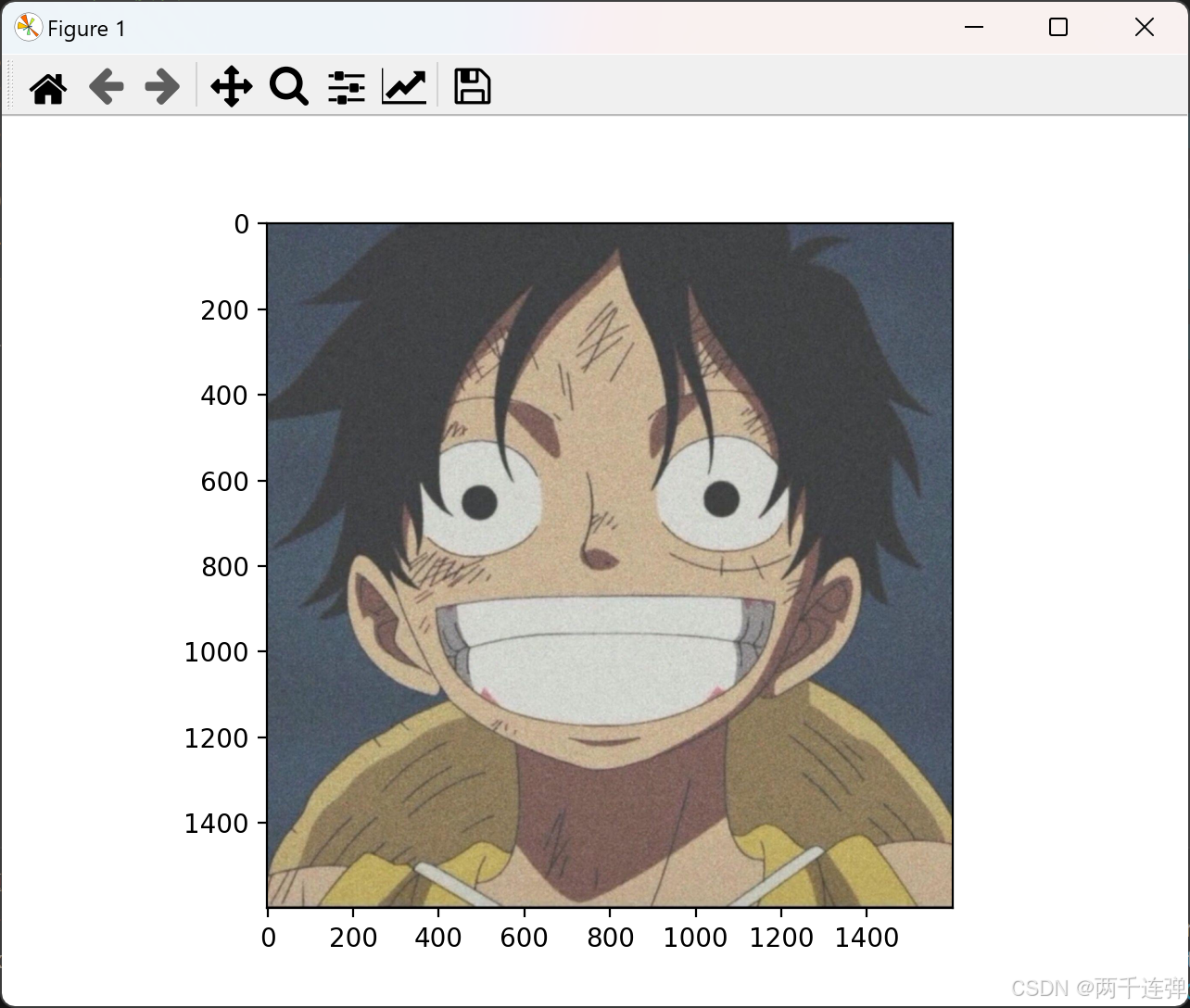
计算机视觉 ---图像读取与显示(OpenCV与Matplotlib)
前言 本文分别介绍了使用 OpenCV 和 Matplotlib 进行图像读取与显示的方法,如 cv2.imread ()、cv2.imshow ()、plt.imread ()、plt.imshow () 等,并提及了使用 OpenCV 时的注意事项。 OpenCV与Matplotlib图像读取与显示的差异 图像读取: Op…...

XML Schema 字符串数据类型
XML Schema 字符串数据类型 1. 概述 XML Schema 是一种用于定义 XML 文档结构和内容的语言。它提供了一种强大的机制来描述 XML 数据的类型、结构和约束。在 XML Schema 中,字符串数据类型是一种基本数据类型,用于表示文本数据。 2. 字符串数据类型 …...

Spring Boot 读取 yml 并映射至实体
application-base.yml app:# 附件存储路径upload-attachments: /data/attachments/# 报告导出详情 url - 前端score-detail-url: ${app.host.web}/#/process/start?processNo{}# api 文件下载 urlfile-download-url: ${app.host.web}/prod-api/sys_file_info/download/{}?fu…...

/// ts中的三斜线指令 | 前端
第一次看到注意到这行代码,不知道的还以为是注释呢,查了资料才知道这是typescript中的三斜线指令,那有什么作用呢? 1. 这行代码是TypeScript中的一个三斜线指令(Triple-Slash Directive),用于…...

什么岗位需要学习 OpenGL ES ?说说 3.X 的新特性
什么是 OpenGL ES OpenGL ES 是一种为嵌入式系统和移动设备设计的3D图形API(应用程序编程接口)。它是标准 OpenGL 3D 图形库的一个子集,专门为资源受限的环境(如手机、平板电脑、游戏机和其他便携式设备)进行了优化。 由于其在移动设备上的广泛适用性,OpenGL ES是学习移…...

【插件】多断言 插件pytest-assume
背景 assert 断言一旦失败,后续的断言不能被执行 有个插件,pytest-assume的插件,可以提供多断言的方式 安装 pip3 install pytest-assume用法 pytest.assume(表达式,f’提示message’) pytest.assume(表达式,f‘提示message’) pytest.ass…...

ctfshow DSBCTF web部分wp
ctfshow 单身杯 web部分wp web 签到好玩的PHP 源码: <?php error_reporting(0); highlight_file(__FILE__);class ctfshow {private $d ;private $s ;private $b ;private $ctf ;public function __destruct() {$this->d (string)$this->d;$this…...

三维点云 和模型转换的问题
随着科技的发展,三维激光扫描采集的点云数据作为一种新型的数据形式,在多个领域中都展现出了其强大的应用价值。那么,什么是点云数据?它是如何生成的?又能为我们的生活和工作带来哪些便利呢? 1.…...
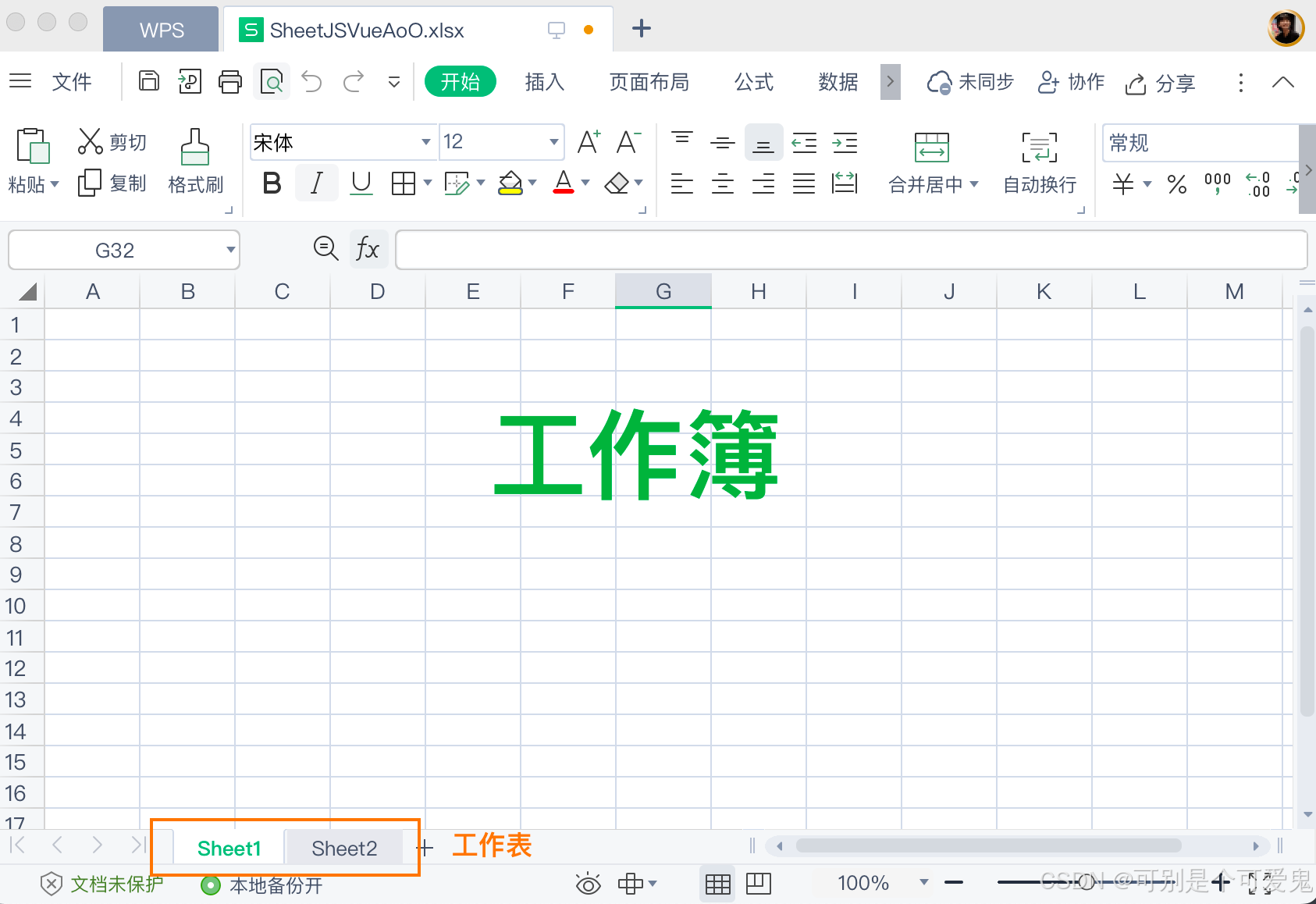
黑马智数Day7
获取行车管理计费规则列表 封装接口 export function getRuleListAPI(params) {return request({url: parking/rule/list,params}) } 获取并渲染数据 import { getRuleListAPI } from /apis/carmounted() {this.getRuleList() }methods: {// 获取规则列表async getRuleList(…...
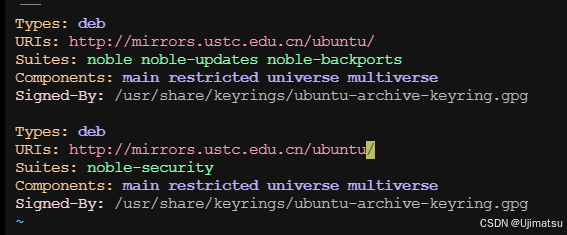
虚拟机安装Ubuntu 24.04服务器版(命令行版)
这个是专门用于服务器使用的,没有GUI,常用软件安装,见 虚拟机安装Ubuntu 24.04及其常用软件(2024.7)_ubuntu24.04-CSDN博客https://blog.csdn.net/weixin_42173947/article/details/140335522这里只记录独特的安装步骤 1 下载Ubuntu 24.04安…...

.net core开发windows程序在国产麒麟操作系统中运行
.net core自从3.1版本号后,完全是一个独立的开源的多平台开发组件,目前国产化是趋势,不少项目需要开发国产如Kylin操作系统中运行的程序,无论是Web程序还是桌面程序,都有这样的需求。 首先,可明确的的.net…...

【LinuxC编程】06 - 守护进程,线程
进程组和会话 概念和特性 进程组,也称之为作业。BSD于1980年前后向Unix中增加的一个新特性。代表一个或多个进程的集合。每个进程都属于一个进程组。在waitpid函数和kill函数的参数中都曾使用到。操作系统设计的进程组的概念,是为了简化对多个进程的管…...

<websocket><PLC>使用js和html实现webscoket,与PLC进行socket通讯的实例
前言 本文是为了实现从网页端通过websocket与PLC端的socket进行数据通讯。 环境配置 系统:windows 平台:visual studio code 语言:javascript、html、PLC 库:node.js 概述 本文的目的是通过网页端与PLC进行socket通讯,但web端一般并不是直接使用socket,而是websocket,…...
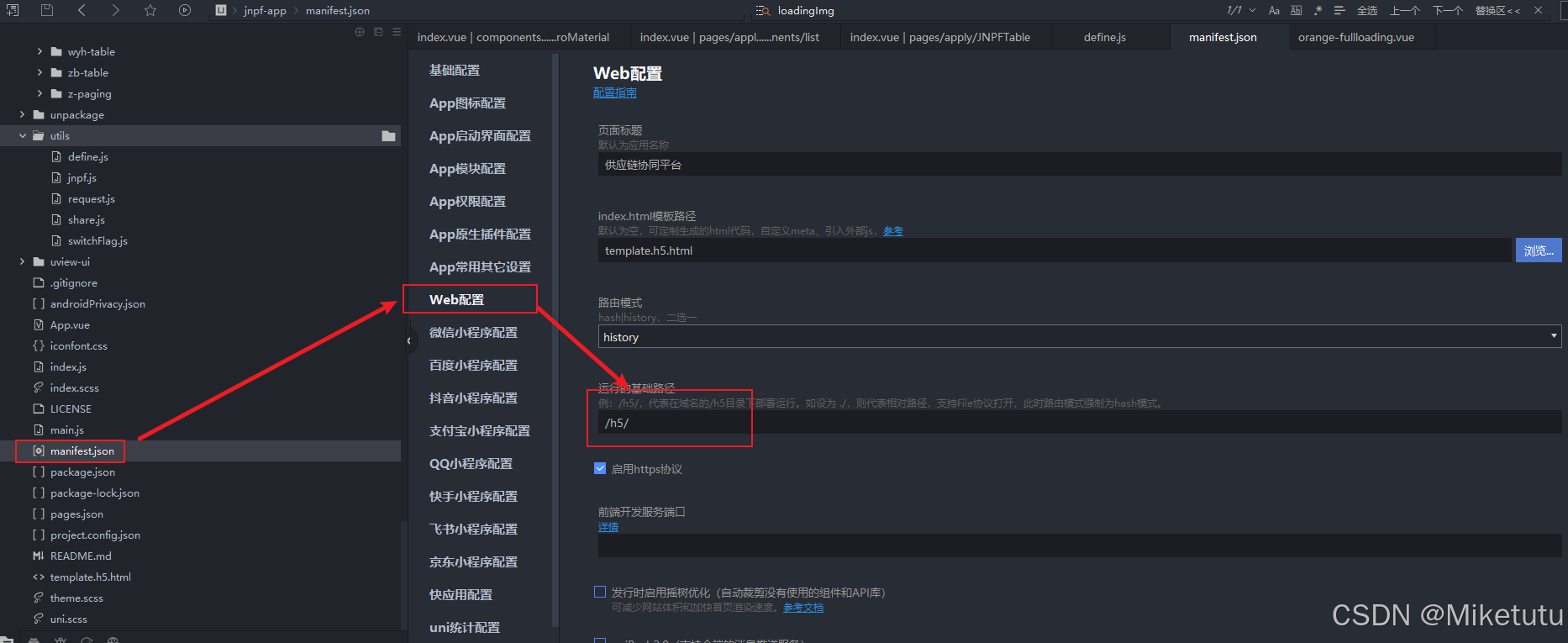
nginx部署H5端程序与PC端进行区分及代理多个项目及H5内页面刷新出现404问题。
在项目中会碰见需要在nginx代理多个项目,如果在加上uniapp开发的H5端的项目,你还要在nginx中区分PC端和手机H5端,这就会让人很头大!网上大部分的资料都是采用在nginx的conf配置文件中添加区分pc和手机端的变量例如:set…...
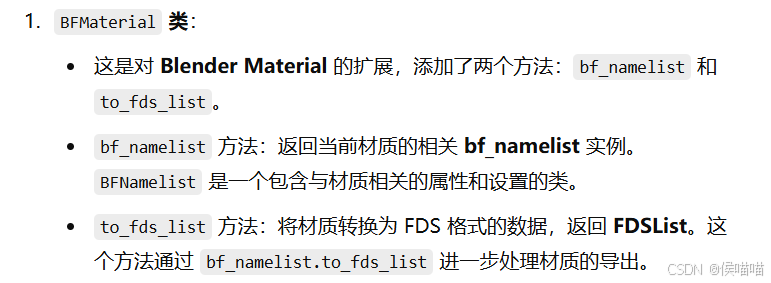
blenderFds代码解读
文章目录 一. 介绍1. FDS(Fire Dynamics Simulator)2. BlenderFDS 二. 下载代码三. 开发环境配置四. 代码解读1. blender python特有语法2. 代码结构2.1 变量名解释2.2 bl文件夹operators文件夹ui其他文件 2.2 lang文件夹bf_sceneON_GEOMON_MESHON_MOVEO…...
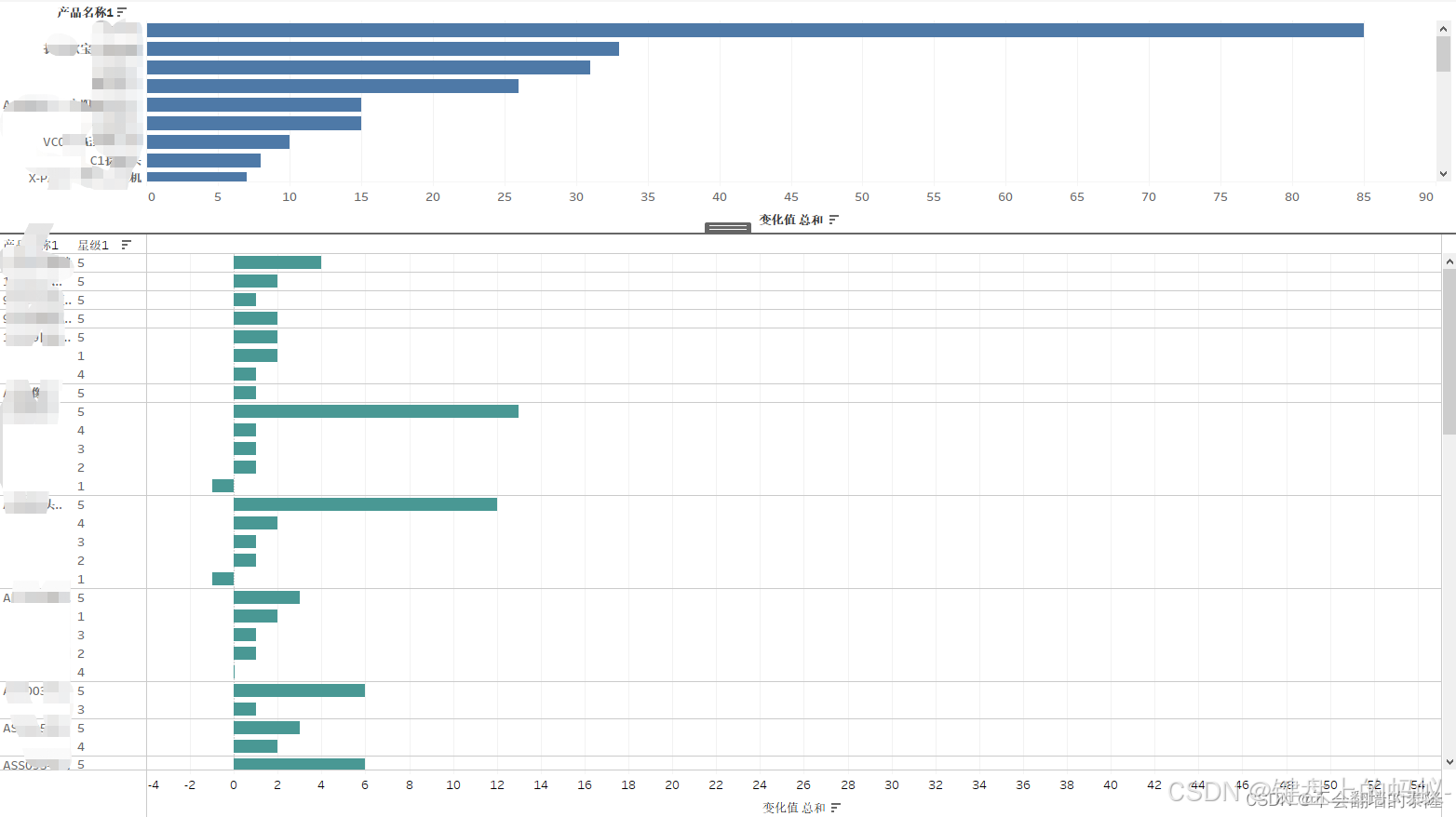
亚马逊评论爬虫+数据分析
爬取评论 做分析首先得有数据,数据是核心,而且要准确! 1、爬虫必要步骤,选好框架 2、开发所需数据 3、最后测试流程 这里我所选框架是seleniumrequest,很多人觉得selenium慢,确实不快,仅针对此…...

新手小白学习docker第六弹------Docker常规安装(安装tomcat、mysql、redis)
目录 1 总体步骤2 安装tomcat2.1 搜索镜像2.2 拉取镜像2.3 查看镜像2.4 启动镜像2.5 访问猫首页 3 安装mysql3.1 搜索镜像3.2 拉取镜像3.3 启动镜像 4 安装redis4.1 拉取镜像4.2 启动镜像(法1基础版)4.3 配置文件4.3.1 在宿主机下新建目录 /app/redis4.3…...
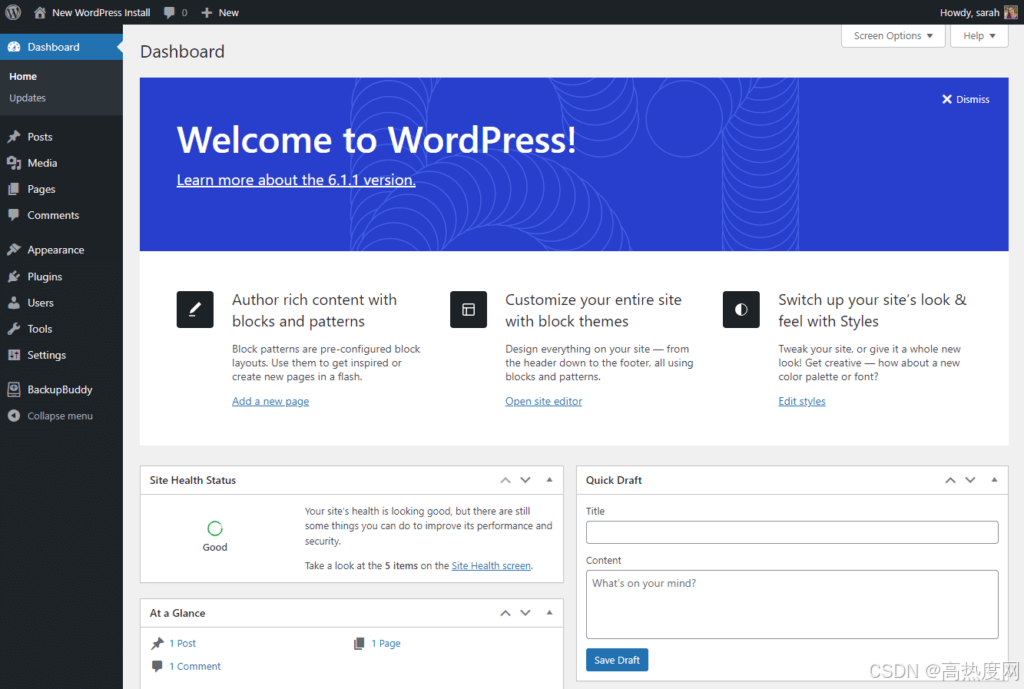
ReactPress与WordPress:两大开源发布平台的对比与选择
ReactPress与WordPress:两大开源发布平台的对比与选择 在当今数字化时代,内容管理系统(CMS)已成为各类网站和应用的核心组成部分。两款备受欢迎的开源发布平台——ReactPress和WordPress,各自拥有独特的优势和特点&am…...
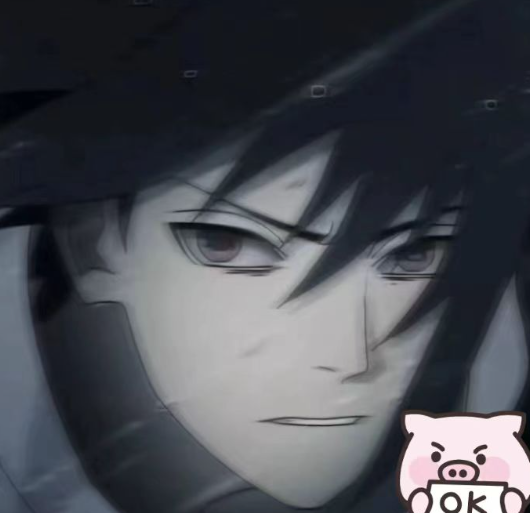
机器情绪及抑郁症算法
🏡作者主页:点击! 🤖编程探索专栏:点击! ⏰️创作时间:2024年11月12日17点02分 点击开启你的论文编程之旅https://www.aspiringcode.com/content?id17230869054974 计算机来理解你的情绪&a…...
结构体的进阶应用)
基于算法竞赛的c++编程(28)结构体的进阶应用
结构体的嵌套与复杂数据组织 在C中,结构体可以嵌套使用,形成更复杂的数据结构。例如,可以通过嵌套结构体描述多层级数据关系: struct Address {string city;string street;int zipCode; };struct Employee {string name;int id;…...

IDEA运行Tomcat出现乱码问题解决汇总
最近正值期末周,有很多同学在写期末Java web作业时,运行tomcat出现乱码问题,经过多次解决与研究,我做了如下整理: 原因: IDEA本身编码与tomcat的编码与Windows编码不同导致,Windows 系统控制台…...

装饰模式(Decorator Pattern)重构java邮件发奖系统实战
前言 现在我们有个如下的需求,设计一个邮件发奖的小系统, 需求 1.数据验证 → 2. 敏感信息加密 → 3. 日志记录 → 4. 实际发送邮件 装饰器模式(Decorator Pattern)允许向一个现有的对象添加新的功能,同时又不改变其…...

Leetcode 3576. Transform Array to All Equal Elements
Leetcode 3576. Transform Array to All Equal Elements 1. 解题思路2. 代码实现 题目链接:3576. Transform Array to All Equal Elements 1. 解题思路 这一题思路上就是分别考察一下是否能将其转化为全1或者全-1数组即可。 至于每一种情况是否可以达到…...
)
IGP(Interior Gateway Protocol,内部网关协议)
IGP(Interior Gateway Protocol,内部网关协议) 是一种用于在一个自治系统(AS)内部传递路由信息的路由协议,主要用于在一个组织或机构的内部网络中决定数据包的最佳路径。与用于自治系统之间通信的 EGP&…...

线程同步:确保多线程程序的安全与高效!
全文目录: 开篇语前序前言第一部分:线程同步的概念与问题1.1 线程同步的概念1.2 线程同步的问题1.3 线程同步的解决方案 第二部分:synchronized关键字的使用2.1 使用 synchronized修饰方法2.2 使用 synchronized修饰代码块 第三部分ÿ…...

大语言模型如何处理长文本?常用文本分割技术详解
为什么需要文本分割? 引言:为什么需要文本分割?一、基础文本分割方法1. 按段落分割(Paragraph Splitting)2. 按句子分割(Sentence Splitting)二、高级文本分割策略3. 重叠分割(Sliding Window)4. 递归分割(Recursive Splitting)三、生产级工具推荐5. 使用LangChain的…...

Neo4j 集群管理:原理、技术与最佳实践深度解析
Neo4j 的集群技术是其企业级高可用性、可扩展性和容错能力的核心。通过深入分析官方文档,本文将系统阐述其集群管理的核心原理、关键技术、实用技巧和行业最佳实践。 Neo4j 的 Causal Clustering 架构提供了一个强大而灵活的基石,用于构建高可用、可扩展且一致的图数据库服务…...

微服务商城-商品微服务
数据表 CREATE TABLE product (id bigint(20) UNSIGNED NOT NULL AUTO_INCREMENT COMMENT 商品id,cateid smallint(6) UNSIGNED NOT NULL DEFAULT 0 COMMENT 类别Id,name varchar(100) NOT NULL DEFAULT COMMENT 商品名称,subtitle varchar(200) NOT NULL DEFAULT COMMENT 商…...

【OSG学习笔记】Day 16: 骨骼动画与蒙皮(osgAnimation)
骨骼动画基础 骨骼动画是 3D 计算机图形中常用的技术,它通过以下两个主要组件实现角色动画。 骨骼系统 (Skeleton):由层级结构的骨头组成,类似于人体骨骼蒙皮 (Mesh Skinning):将模型网格顶点绑定到骨骼上,使骨骼移动…...
